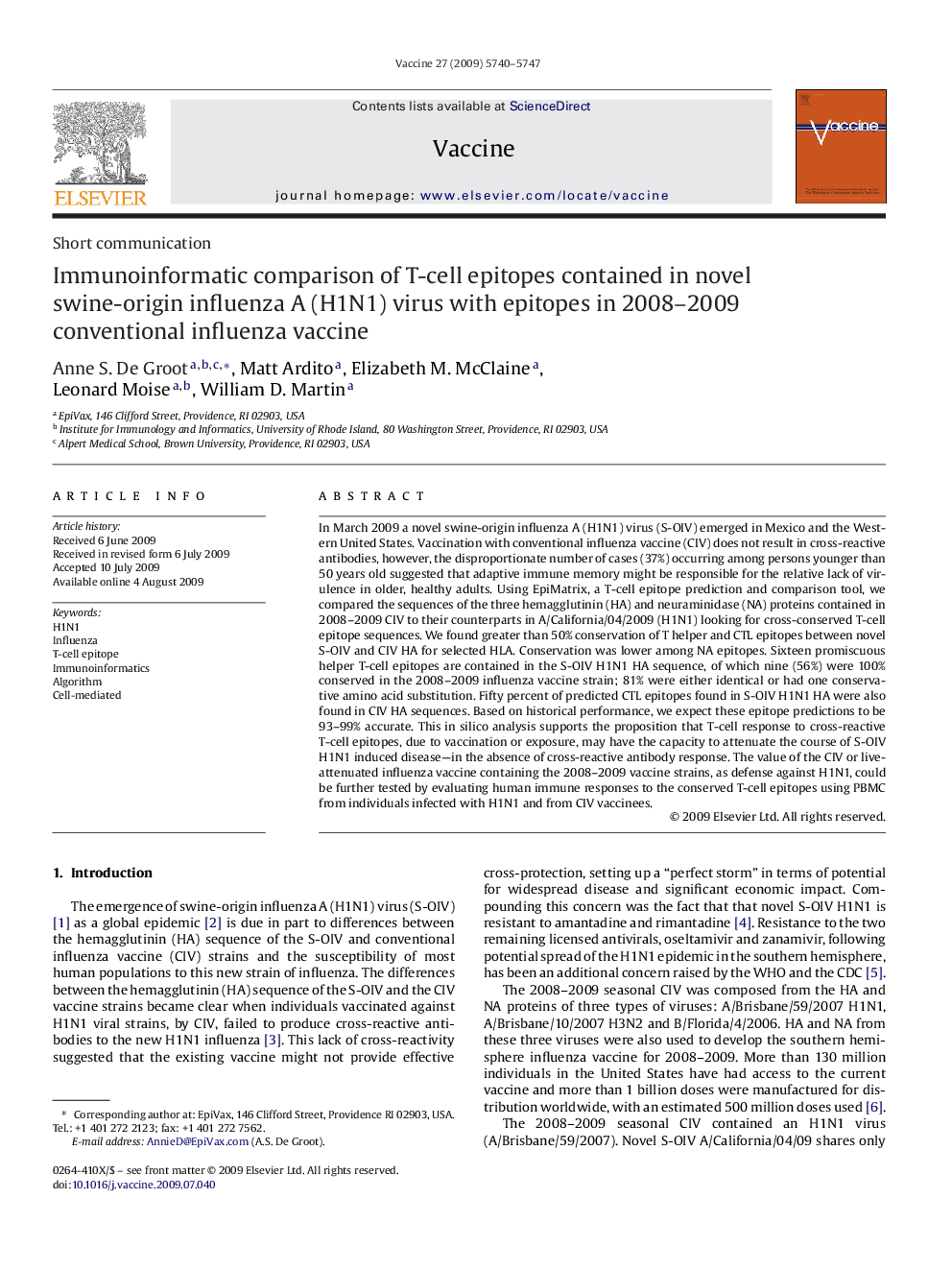| کد مقاله | کد نشریه | سال انتشار | مقاله انگلیسی | نسخه تمام متن |
|---|---|---|---|---|
| 2405311 | 1103030 | 2009 | 8 صفحه PDF | دانلود رایگان |

In March 2009 a novel swine-origin influenza A (H1N1) virus (S-OIV) emerged in Mexico and the Western United States. Vaccination with conventional influenza vaccine (CIV) does not result in cross-reactive antibodies, however, the disproportionate number of cases (37%) occurring among persons younger than 50 years old suggested that adaptive immune memory might be responsible for the relative lack of virulence in older, healthy adults. Using EpiMatrix, a T-cell epitope prediction and comparison tool, we compared the sequences of the three hemagglutinin (HA) and neuraminidase (NA) proteins contained in 2008–2009 CIV to their counterparts in A/California/04/2009 (H1N1) looking for cross-conserved T-cell epitope sequences. We found greater than 50% conservation of T helper and CTL epitopes between novel S-OIV and CIV HA for selected HLA. Conservation was lower among NA epitopes. Sixteen promiscuous helper T-cell epitopes are contained in the S-OIV H1N1 HA sequence, of which nine (56%) were 100% conserved in the 2008–2009 influenza vaccine strain; 81% were either identical or had one conservative amino acid substitution. Fifty percent of predicted CTL epitopes found in S-OIV H1N1 HA were also found in CIV HA sequences. Based on historical performance, we expect these epitope predictions to be 93–99% accurate. This in silico analysis supports the proposition that T-cell response to cross-reactive T-cell epitopes, due to vaccination or exposure, may have the capacity to attenuate the course of S-OIV H1N1 induced disease—in the absence of cross-reactive antibody response. The value of the CIV or live-attenuated influenza vaccine containing the 2008–2009 vaccine strains, as defense against H1N1, could be further tested by evaluating human immune responses to the conserved T-cell epitopes using PBMC from individuals infected with H1N1 and from CIV vaccinees.
Journal: Vaccine - Volume 27, Issue 42, 25 September 2009, Pages 5740–5747